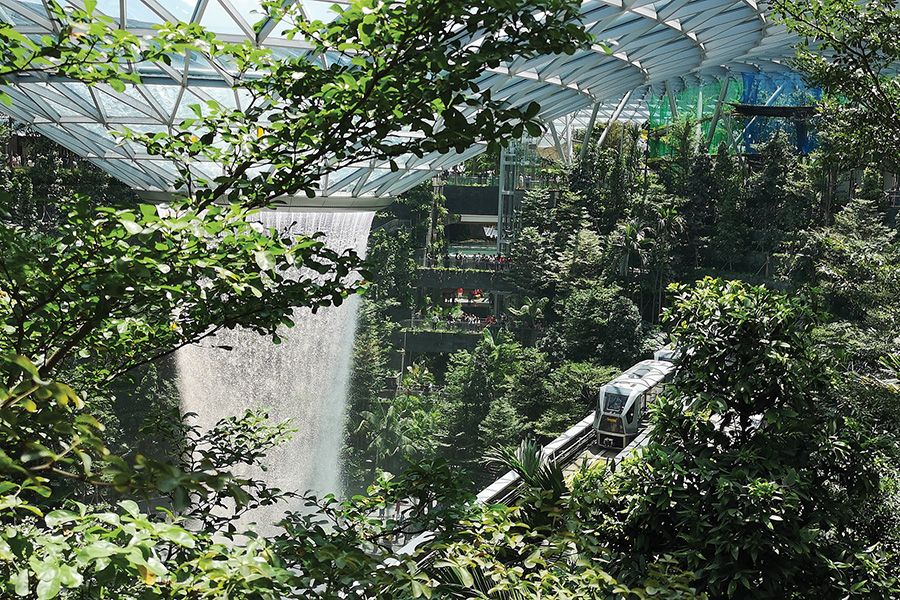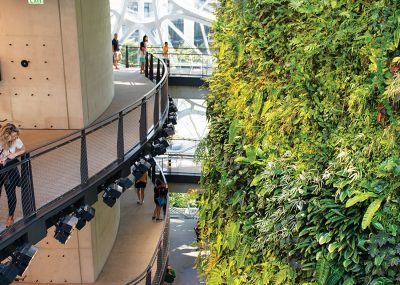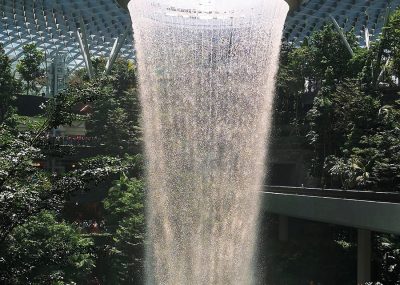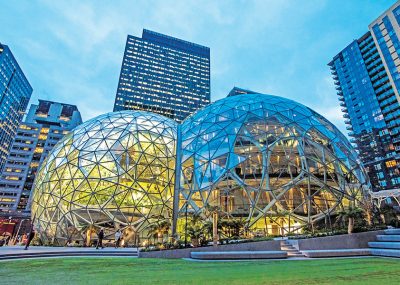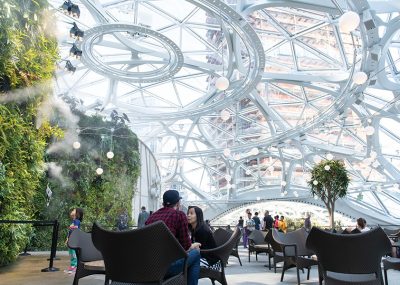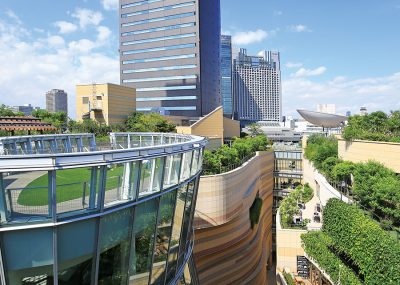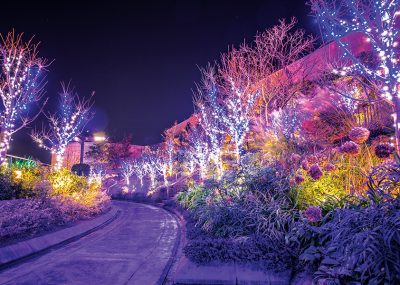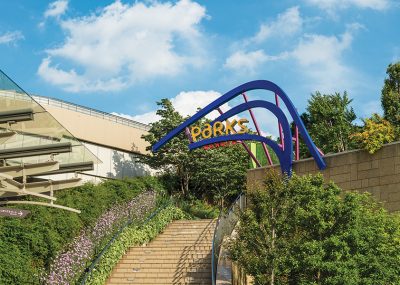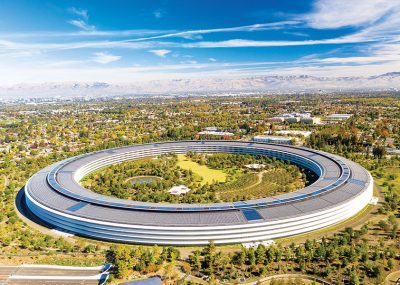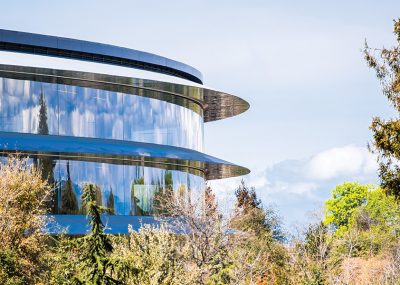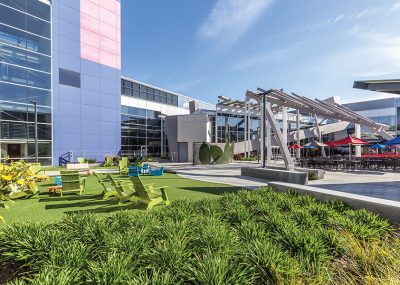‘Biophilic Design’ seems like a mouthful but it has real and significant influence on the way we behave. How we connect with nature influences our mood, well being and mindset; that has serious connotations to the way we shop.
As touched on in my previous article, Biophilic Design is the new buzz word involved with place making. Biophilic means ‘affinity of human beings to nature’ and so designing to connect nature. Connections with the nature and the resulting benefits for health and wellbeing are an ever important factor in our increasingly urbanised world with 89.55% of the Australian population now living in urban areas.
Tony Hiss, staff writer for New Yorker magazine wrote in his book The Experience of Place in 1990 that “our surroundings, built and natural alike have an immediate and continuing effect on the way we feel and act, and on our health and intelligence”. Winifred Gallagher, author of The Power of Place (1993) described how our surroundings shape our thoughts, emotions and actions. She goes on to say how one physical setting can intersect with the lives of its users in a variety of surprising ways. For instance, evidence suggests that when a slum area is freshly painted and has window boxes filled with flowers, marking ownership and pride, that crime levels actually drop. She ends her book with a plea for putting a little nature back in our lives for the good of body and soul.
Our love of waterfalls, trees and open spaces is encoded in our genes and suggest peacefulness and calm. Environment psychology further suggests that our temper, manners and behaviour are all influenced by our way of life and even the food we eat.
- Amazon’s Seattle headquarters
- The Jewel, Changi Airport
US research (Terrapin Bright Green Study) shows that people will in fact walk a greater distance to biophilic sites or spaces with more nature. Furthermore, their research showed that 76% of participants named at least one biophilic element (greenery, view, flowers and sun) as their most liked feature of the space or park that they walked the extra distance to get to. So urban design strategies that support biophilia (our biological and emotional connection with nature) will improve people’s experience and prolong their stay.
The key theme here is the human connection at both a personal and community level. This is the essence of place making. We need to create meaningful, physical and personal experiences over digital ones and have engaged lives rather than disconnected lives. All too often our buildings don’t give us the chance to connect with nature.
Many of our shopping centre buildings have few or no windows, no fresh air and generally views of something uninspiring like a carpark. Given that we spend about 90% of our day indoors, this means most of us are living the majority of our lives cut off from the natural world.
Companies like Apple, Google, Facebook and Amazon have tapped into the wealth of research that shows exposure to nature improves productivity, creativity and wellbeing. They have embraced the imperative that our buildings should bring nature’s principles inside allowing staff to fulfil human beings’ instinctual need to be part of nature. Retail is yet to grab this bull by the horns.
- Amazon’s Seattle headquarters
- Inside Amazon’s Seattle headquarters
Amazon’s Seattle headquarters known as ‘The Spheres’ comprise three glazed domes of hexagonal panels that serve as employee lounges and workplace. The domes (which range from three to four storeys) are home to some 40,000 plants as well as meeting spaces and retail outlets. The Spheres are open for limited public tours that are sold out weeks in advance even at the price of $74 per adult and $57 per child. The largest of the three spheres houses a cafeteria, stairways, lofts and bathrooms. The stairway shaft is covered in a living wall of 25,000 plants. The complex has become a landmark tourist attraction for Seattle.
- Namba Parks, Osaka
- Namba Parks, Osaka
Namba Parks in Osaka by the Jerde partnership was a pioneer in biophilic design and opened in 2003. It consists of a high-rise office tower, a 120-tenant shopping centre and was conceived as a large park, as a natural intervention in Osaka’s dense urbanity. The rooftop park crosses multiple blocks while gradually ascending eight levels connecting to the street. Passers by can easily access its groves of trees, rocks, cliffs, waterfalls, ponds and outdoor terraces. The project won the Urban Land Institute’s Award of Excellence in 2009.
Singapore’s Changi Airport ‘Jewel’ opened several weeks ago and is another fine example of biophilic design as mentioned in my previous article.
Shanghai’s Greenland Centre opened two years ago and is a retail development atop of one of the city’s busiest metro stations. Designed as an urban farm with a green valley the 20,000m2 complex weaves its way into the city’s urban life. The roof is split into different levels and connected at various heights with landscape terraced slopes responding to the functions below and human activities within. The project won the Best Shopping Centre Award category at the 2018 World Architecture Awards.
- Apple Park, California
- Apple Park, California
Apple’s Park headquarters in California nicknamed the ‘Spaceship’ had the design idea of blurring the lines between the indoors and outdoors. The interior of the ‘Spaceship’ has had a grove of fruit trees planted. Steve Jobs wanted the whole campus to look less like an office park and more like a nature refuge. Eighty per cent of the site consists of green space planted with drought resistant trees. As a consequence of the presence of Apple Park there has been an increase in tourism (Apple Park has a visitor’s centre) and real estate values of local housing.
Apple Park also has one of the biggest solar roofs in the world producing 17 megawatts of power, which provides 75% of the campus power.
- Google headquarters, California
- Google headquarters, California
Google’s new 110,000m2 headquarters at Mountain View California is the company’s first physical manifestation of its approach to the workplace and its staff. Google wanted the new building to have a strong relationship with the local community and offer a range of amenities for neighbours as well as employees. To keep pace with the fast moving world of technology, the design was more like a large hanger or airport terminal with a series of flexible spaces underneath. These can be enclosed and allow project teams to rearrange office spaces quickly to meet their changing needs. Doing away with the traditional and conventional structure of roof and walls, the external envelope of the building is formed by a sequence of canopies of photovoltaic panels forming a giant tent-like structure. Blurring distinction between inside and out, the canopies extend over or reveal landscaping, cycle ways and café’s beneath, allowing people, light and air to flow in and out. The building is currently under construction and due to be completed later this year.
The question is are we separate from nature or part of it? If we want customers to embrace our centres more, we need to embrace them as Apple, Google and Amazon have and create that connection.



